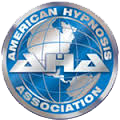Emotional Abuse Wounds the Inner Child
Negative messages from parents and caretakers or other adults who harshly criticize and berate are wounding to the Inner Child’s sense of self. The words used are often loud or even screamed. Sometimes the tone of voice is sarcastic or derisive. Cursing someone or calling them names can inflict terrible emotional pain.
Non-verbal negative messages are often conveyed in “crazy eyes” and scowls that frighten. Looking angrily at or walking away from suggests hostility and abandonment; dismissive hand gestures suggest rejection and banishment.
Often, the child infers negative messages about their worth from the absence or inadequacy of parental involvement and caretakers’ attention. When those others ignore the needs that the child can’t meet for him/herself, the Inner Child feels abandoned and neglected. The child develops coping mechanisms (such as being invisible, striving for perfection, people pleasing, playing small) which may help to some extent, but in adulthood, those behaviors sabotage their success and well-being.
Physical Abuse Damages the Inner Child
Slapping, hitting, punching, etc. are NEVER ACCEPTABLE. Physical violence towards a child may stem from severe frustration, anger, rage, or childhood abuse the abuser suffered. But such behavior is never excusable. These behaviors convey to the child that they are wrong, unwanted, unlovable, and unworthy; they have negative impact upon the Inner Child’s self concept, diminishing their self-confidence, self-respect, and self-esteem. Too often victims of childhood abuse grow up with the inability to feel secure and trust others. This hampers their ability to establish satisfying business, personal, or intimate relationships.
Sexual Abuse Harms the Inner Child
When an adult, or even an older child, engages in inappropriate touching of any kind, as well as flirtatious behavior, lurid stares, suggestive remarks, or presentation of sexual content (in the form of drawings, photos, videos), they are violating a child’s innocence and committing sexual abuse. The damage that results can last a lifetime, causing feelings of confusion, shame, unworthiness, disgust, self-loathing, and the inability to develop a positive self-image and healthy adult sexuality. Memories of these occurrences are often buried in the subconscious mind, but the pain and anguish persist and get expressed in one unhealthy way or another.
Impact of Negative Messages on the Inner Child
It is not surprising that the negative experiences mentioned above affect the Inner Child adversely. Problems and disorders can develop such as generalized, social, or performance anxiety, panic, confusion, inability to concentrate, loss of focus, insecurity, poor self-image, and self-sabotage in its many forms.
To what extent the Inner Child’s wounds ever heal and the negative effects are overcome depends, in part, on whether the Inner Child receives from others adequate emotional nourishment, such as love, encouragement, support, and appreciation. People other than parents or caretakers, such as siblings, teachers, ministers, relatives, coaches, friends, classmates and teammates, often provide some of what’s needed. As an adult, having a relationship with a wise and loving partner is another source of help to heal. But in reality, providing the amount of understanding, empathy, emotional and spiritual nourishment that is needed for significant healing is beyond what most people are capable of giving, have time for, know how to give, or are motivated to give–even the most well-meaning among them.
If you suffered trauma or abuse of any kind in your childhood, and have not been able to achieve what you want in life–such as feeling good about yourself, having healthy relationships, satisfying work, financial stability, emotional and physical well-being–it is likely that your Inner Child needs professional help to heal. They are many forms of therapy available. Inner Child hypnosis is one form to consider, by itself, or as an adjunct to working with a clinical psychologist or psychiatrist.
Inner Child Hypnosis Heals
Inner Child hypnosis uses a variety of tools and techniques to access, communicate with, calm, support, encourage, and heal your Inner Child. Hypnotherapy to heal the Inner Child can create positive changes in the adult who seeks greater self-respect, self-confidence, self-worth and self-acceptance. It can help you overcome self-sabotaging behavior that your Inner Child learned in order to cope with the abuse and dysfunction in your family growing up. To achieve these goals requires your full cooperation. You must really want to heal and make the changes; you must be open to believing that you can heal and can make positive changes; and you must be willing to use the tools and techniques provided.
Part of the therapeutic process involves conscious cognitive dialogue. I ask the client questions to gain a general understanding of their childhood and family of origin, and to identify the specific childhood incidents that harmed them. I learn how they tried to cope and what self-sabotaging behavior developed which impedes them as adults.
Because it is important to develop a positive and trusting relationship with the client before meeting their Inner Child, the first one or two hypnotic sessions are spent creating a peaceful, calm state in which rapport is established. An introduction to what hypnosis is, how it feels, why it works, etc. helps the client let go of fear, anxiety, and worry about the process. Techniques that deepen the hypnotic state and promote relaxation, develop self-esteem, and improve self-confidence are applied.
Throughout the course of treatment I present a variety of hypnotic suggestions, visualizations, and other techniques to access and relate to the client’s Inner Child, and replace limiting beliefs and negative emotions with positive feelings, attitudes, and empowering beliefs. Positive coping strategies that support accomplishing their goals and giving up bad habits are installed into their subconscious mind, promoting self-love in place of self-sabotage
Sometimes the client meets their Inner Child in hypnodrama, where they return in their mind to damaging childhood events, but this time with my help, acting as a supportive adult, who intervenes to stand up against the abuser, while soothing and protecting the child. On other occasions, the client engages in guided imagery playfully with the Inner CIhild to create a positive bond that helps the Inner Child accept their adult persona, opening up to new ways of thinking about the self, approaching problems, and pursuing goals.
Hypnotherapeutic Treatment Plan for Healing the Inner Child
For each client, I create a customized treatment plan based on their particular history, challenges, goals, and needs. There is no “one plan fits all.” Clients receive an audio file of the hypnosis portion of each session to use in between sessions to reinforce what is presented and accelerate progress.
The general approach I take to each case, however, is outlined below.
1. Engage in cognitive inquiry to discover the basis for the Inner Child’s pain
- Family of origin
- Damaging childhood events
- Childhood copy mechanisms
- Negative effects
- Triggers that re-arouse the pain
- Negative self-talk
- Negative habits
2. Develop a hypnotherapeutic strategy
3. Explain the fundamentals of hypnotherapy
4. Determine the client’s primary mode of suggestibility
5. Induce and condition the hypnotic state
6. Apply therapeutic techniques to support initial goals
7. Track client’s progress on goals
8. Revise therapeutic strategy (if necessary)
9. Implement newly revised strategy
Inner Child Hypnosis Tools and Techniques
The following list includes some of the tools and techniques I use in Inner Child hypnosis:
- Deep Diaphragmatic Focused Breathing
- Resource State Identification
- Progressive Relaxation
- Post-Hypnotic Suggestion
- Staircase Induction
- Self-Esteem Visualization
- Interactive Self-Esteem Building
- Emotional Freedom Technique
- Circle Therapy
- Ego Strengthening
- Guided Imagery
- Inner Child Regression Work
- Negative Trigger Desensitization
- Positive Memory Revival
- Positive Trigger Association
- Negative Self-Talk Redirection
- Positive Suggestions for Self-Empowerment
Have a Question or Concern?



